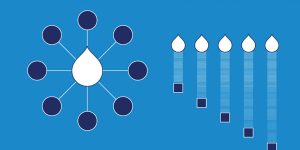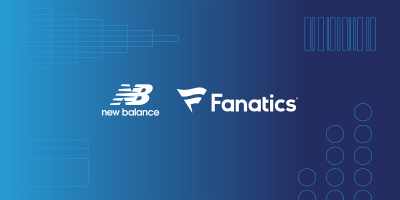
Omnichannel vs. Multichannel: What’s the Difference?

Omnichannel and multichannel may sound like they're the same thing, but in reality, these two strategies are quite different. Although they both involve many digital channels and steps along the customer journey, multichannel focuses on pre-defined sales pathways for each channel, and omnichannel focuses on how you sell based on evolving customer behavior.
Both are effective e-commerce strategies and you often have to get multichannel selling right before you’re able to excel at omnichannel e-commerce. Let’s explore the key differences between the two and take a look at how to choose which approach is right for you.
Multichannel vs. omnichannel marketing: key differences
The key differences between omnichannel and multichannel start with the focus point of your strategy. From there, how closely you decide to integrate your channels adds another layer of differentiation. Then, the complexity of setup and the technology you need to streamline the experience can really set the two apart.
Here are the main differences between omnichannel and multichannel marketing.
1. The focus point of the strategy
The focus point of the strategy is one of the biggest differences between omnichannel and multichannel marketing. Multichannel is product-focused — how do we get customers to follow our products and build isolated pathways to the sale on each channel? Omnichannel, on the other hand, is completely customer-focused — how do we follow and place products in their natural evolving pathways?
A good example of a multichannel experience is when a customer abandons their cart on your website. You offer a $100 coupon for them to come back and buy. That $100 coupon is retargeted on Facebook, Instagram, Amazon, sent via email, etc. But the offer on each channel doesn’t change as the customer is navigating between them. It doesn’t consider how many times they’ve ignored the offer or interacted and failed to convert. There’s no personalized content, nothing new.
An omnichannel approach to the same situation might start by sending the $100 off coupon in an email. Once you track them to Instagram and they ignore the $100 coupon you show them an educational or entertainment video. Eventually, they re-engage, end up back on your website, and you can resurface the $100 coupon. Or maybe you sweeten the offer to a $150 discount. Omnichannel develops with engagement instead of repeating the same flat approach on every channel. That takes some advanced integration between all of your channels.
2. Integration between marketing channels
Another key differentiator between omnichannel and multichannel is the integration (or lack thereof) between channels. Does your customer’s interaction with your website change their experience on social media or other marketplaces like Amazon? How completely your channels are integrated is one of the main things that determine if you’re running omnichannel or multichannel marketing.
Multichannel marketing is when you have pre-existing purchase paths defined on each channel. Your website, marketplaces, social media, and messaging apps all have clear steps for customers to follow once they get there. But your customer’s steps along each channel don’t inform the pathways on other channels. They could have one product experience on your website and have the exact same one on Amazon marketplace. That would be great for brand consistency but it wouldn’t deepen their experience with your product.
Omnichannel marketing involves fully integrated channels. Each of your marketing channels still has clear buying pathways set up. Only now, they interact and inform each other. If your customer goes from your website to email to social media, what they see evolves along their path instead of repeating. They’re not getting the same content or offers on every channel. Their product experience develops and gets more nuanced based on their behavior as they shop.
3. Complexity of setup work
Most companies aim for omnichannel marketing but it’s much harder to implement than a multichannel strategy. First, you have to set up the natural sales pathways for each channel and then you have to find where they intersect and create integrations at every step. This kind of complexity takes a lot of setup work, the right e-commerce technology, and continuous attention.
With multichannel marketing, you can set up a funnel for each of your channels and optimize them. You don’t have to orchestrate journeys from channel to channel and account for every variation of behavior. This makes it an easier strategy to start with and a stepping stone to creating a world-class omnichannel customer experience. Once you have each of your channels lined up, then you can start to personalize every step of the journey.
Omnichannel is going to require significant resources — including initial investments and continuous IT department attention. Your technology stack will also likely require a combination of digital asset management (DAM), product information management (PIM), and advanced customer journey tools. You’ll have to build a tech stack that’s reliable, flexible, and easy to maintain. That’s easy to say, not easy to do.
Need support deciding between omnichannel vs. multichannel?
Now you know the key differences between omnichannel and multichannel marketing you get to choose which direction is best for you. Remember, multichannel is focused on pre-defined pathways across many channels that don’t integrate at every step. While, omnichannel integrates all your channels with technology to personalize interactions based on evolving customer behavior — ideally in real-time.
Leveraging a DAM and PIM solution to help manage, organize, and distribute product information and content, can help teams achieve their desired marketing strategy. Our combined DAM and PIM platform, Acquia DAM (Widen), can help you create personalized product content experiences at every step of the customer journey.
Request, watch, or click through a free demo to see how Acquia DAM can help you realize your multichannel or omnichannel marketing strategy.
Note: This article was originally published on Widen.com.



